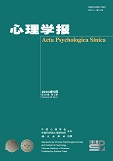Adolescence has been conceptualized as a second “sensitive period,” marked by neuroendocrine developmental changes that heighten one’s sensitivity to their environment. Faced with increased stressful life events, particularly those involving interpersonal relationships, adolescents experience a continuous rise in the incidence of internalizing and externalizing issues, which negatively impacts their personality development, academic performance, and physical health. Existing research has shown consistent support that positive and healthy interpersonal relationships significantly enhance adolescents’ social adaptability and level of well-being. Conversely, negative interpersonal relationships, particularly those characterized by danger and hostility, lead adolescents to develop negative cognitive patterns and self-assessments, thereby increasing their risk of psychological crises. Additionally, certain genetic traits also influence adolescents’ social adjustment. Although risks to social adjustment are influenced by multiple factors, the potential for interactions between genetics and one’s environment remains likely, garnering much research attention in psychology, psychiatry, and epigenetics. As such, this study explored the moderating role of genetic risk in various forms of environmental stress and adolescent social adjustment (including depressive symptoms, prosocial behavior, and self-injury) through the assessment of multilocus genetic variations and the measurement of a critical environmental risk factor, specifically, the parent-child relationship.
Using questionnaires and DNA-typing techniques, 700 adolescents (14.15 ± 0.63 years old) were selected from a junior high school in Hunan Province through whole group sampling. After obtaining informed consent from the school, parents, and participants, participants completed the Parent-Child Intimacy Questionnaire, the Childhood Trauma Scale, the Short Form of the Center for Epidemiological Studies Depression Scale, the Prosocial Tendencies Measures, and the Deliberate Self-Harm Inventory. Genetic samples were sent to a professional biotechnology company for DNA extraction and typing. In study 2: The participants recruited in Study 1 via an experimental flyer. They completed emotional Stroop task and dictator games.
The results indicated that: 1) HPA axis multilocus genetic profile score (MGPS) was only associated with the mother-child relationship, and there were significant bidirectional correlations between the parent-child relationship, childhood trauma, depressive symptoms, prosocial behavior, and self-injury. 2) Utilizing the MGPS approach, in the context of the depression equation, both the father-child and mother-child relationship models revealed an interaction effect between the parent-child relationship and childhood trauma which strengthened as the HPA axis system’s MGPS increased. 3) The interaction effect of G × E × E was found to impact adolescent prosocial behavior in the mother-child relationship model only. Furthermore, this interaction became significant when the standard deviation of the MGPS exceeded -0.14. 4) No G × E × E triadic interaction was detected in the parent-child relationship model. Subsequent binary interaction tests between childhood trauma and MGPS revealed that as MGPS increased, the impact of childhood trauma on self-injury increased. 5) Results from three sensitivity analyses also demonstrate that multigene hereditary research exhibits greater efficacy and stability. 6) Supplementary evidence indicates the presence of a main effect of the parent-child relationship in accuracy and response time for emotional words. Additionally, the interaction effect of G × E × E was identified in the mother-child relationship model.
In conclusion, this study demonstrates that the HPA axis MGPS moderates adolescent stress sensitivity. Specifically, the HPA axis MGPS moderated the interaction between childhood trauma and the parent-child relationship, affecting adolescent social adjustment. Moreover, individuals with high genetic sensitivity exhibited a pattern consistent with the differential susceptibility model, wherein they displayed lower levels of depressive symptoms and self-injury, and higher prosocial behavior in positive environments, while the reverse held true in adverse environments.




